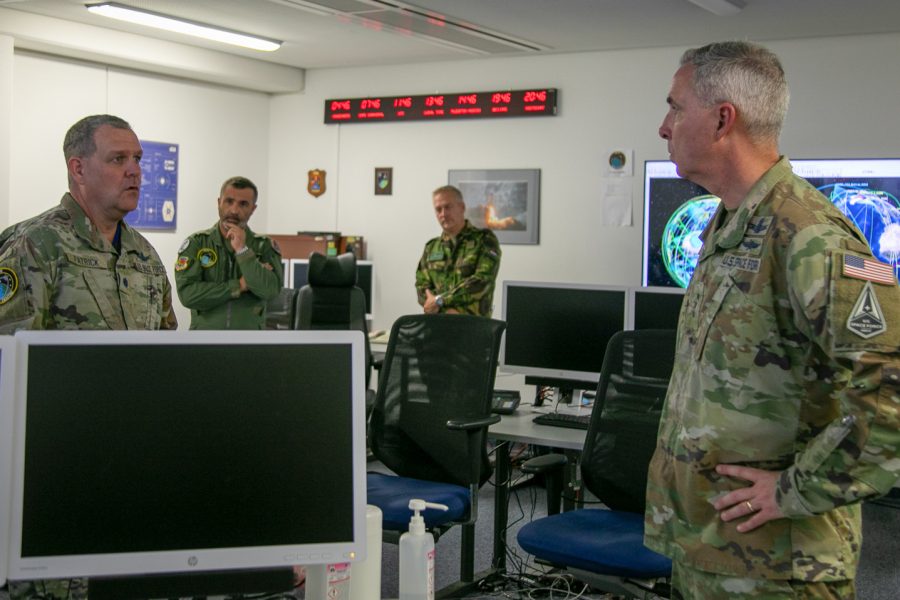The U.S. Space Force will officially activate its component for Europe and Africa in just over a month, U.S. European Command said Oct. 31.
U.S. Space Forces Europe and Africa, which will be dubbed SPACE-EURAF, will stand up Dec. 8, U.S. European Command (EUCOM) said in a news release. It will become the fourth Space Force component embedded in one of the U.S. military’s regional commands, joining U.S. Central Command, U.S. Indo-Pacific Command, and U.S. Forces Korea.
As things stand now, America’s current space capabilities in Europe are nestled under the air component, U.S. Air Forces in Europe-Air Forces Africa (USAFE-AFAFRICA). That model dates back to before the Space Force became an independent service.
Giving the Space Force its own components elevates the service to put it on par with other branches and allows the USSF to better provide space capabilities to combatant commanders, service officials say.
“The activation of Space Forces Europe and Africa is a significant milestone in the journey to fortify joint space capabilities within Europe and Africa,” EUCOM said in a statement.
U.S. Space Forces Europe and Africa “will support a wide range of missions, including deterring potential adversaries, responding to crises, and strengthening our alliances and partnerships,” EUCOM added in its release. Many nations in Europe already have a long history of civilian space operations and have put a focus on building up their military space capabilities.
Space Force Col. Max Lantz, who already heads up the space portfolio in USAFE-AFAFRICA, will become SPACE-EURAF’s inaugural commander. Both U.S. European Command and U.S. Africa Command are located in Germany, and SPACE-EURAF will not solely focus on Europe.
“In the case of Europe, we’re just taking advantage of the fact that USAFE is also the Africa Command support,” Chief of Space Operations Gen. B. Chance Saltzman explained at AFA’s Air, Space & Cyber Conference in September. “Because it’s all done from the same location, it’s easy for us to leverage that same construct and really get a two-for-one, to some degree.”
Despite the immediate concern surrounding the Middle East in the wake of the Israel-Hamas conflict and attacks on U.S. troops by Iranian proxy groups, the U.S. military’s long-term focus is on the Pacific and Europe. The Space Force set up its Indo-Pacific component last year as its first step towards creating geographic commands.
Plans to establish a European component for the Space Force were announced around the same time in November 2022. Throughout 2023, senior U.S. military space leaders traveled to Europe to strengthen military space alliances—not an easy task for an often highly classified domain that conventional wisdom held was a safe harbor from military action until a few years ago.
Formally establishing the component, however, took time.
“When you have to work with host nations, there’s an extra few steps,” Saltzman said. “So just going through all those normal coordination processes just took a little bit longer.”
The Space Force is looking forward to having a more vocal role in key decisions in combatant commands in the future, service officials say.
“That detailed integration is much harder to do when you’re thousands of miles separate,” Saltzman said. “What these components require is pretty senior people that understand the business.”
After SPACE-EURAF is established, the Space Force will likely consider other components for combatant commands. Top possibilities include U.S. Cyber Command, U.S. Special Operations Command, and U.S. Forces Japan.
